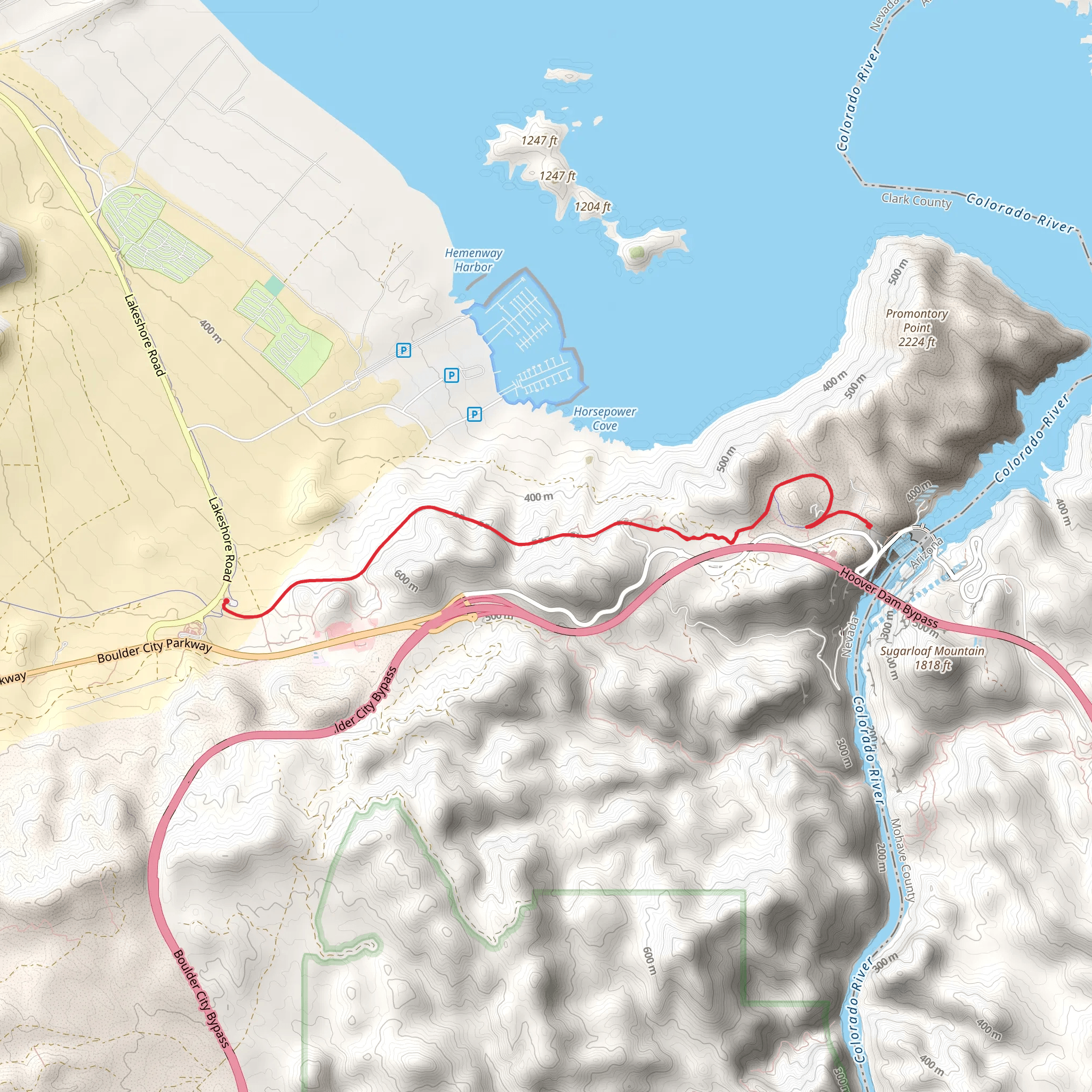
Download
Preview
Add to list
More
12.6 km
~2 hrs 52 min
212 m
Out and Back
“Embark on the Historic Railroad Trail: a scenic, historic trek through Nevada's desert beauty and engineering marvels.”
The Historic Railroad Trail offers a unique journey through the picturesque landscapes near Clark County, Nevada, covering approximately 13 kilometers (about 8 miles) with an elevation gain of around 200 meters (approximately 656 feet). This out-and-back trail is steeped in history and provides hikers with a moderate challenge, suitable for those with some experience on the trails.
Getting to the Trailhead
To reach the trailhead, you can drive or take public transportation to the Lake Mead National Recreation Area. If driving, take U.S. Highway 93 towards Boulder City and follow the signs directing you to the Alan Bible Visitor Center, which is a significant landmark near the trail's starting point. Parking is available in the area, and from there, the trailhead is easily accessible.
Historical Significance and Trail Features
As you embark on the Historic Railroad Trail, you'll be walking along the same path that once carried materials and workers to the Hoover Dam during its construction in the 1930s. The trail is famous for the five large railroad tunnels you'll pass through, each approximately 300 feet in length and 25 feet in diameter. These tunnels are a testament to the engineering feats of the time and are listed on the National Register of Historic Places.
Flora, Fauna, and Landmarks
The trail offers panoramic views of Lake Mead, the largest reservoir in the United States by volume when full. Keep an eye out for the diverse wildlife in the area, including desert bighorn sheep, which are often spotted on the rocky hillsides. The plant life along the trail is typical of the Mojave Desert, with creosote bushes, yucca, and various cacti.
Approximately halfway through the hike, you'll reach a viewpoint offering stunning vistas of the surrounding desert landscape and the vast expanse of Lake Mead. This is an excellent spot for a rest and photo opportunities.
Navigation and Preparation
Before setting out, it's advisable to download the trail map onto your HiiKER app to ensure you have offline access to navigation tools, as cell service can be spotty. The trail is well-maintained and marked, but having a digital map can enhance your experience and provide peace of mind.
Due to the desert climate, it's essential to carry plenty of water—at least one gallon per person is recommended. Sun protection, such as sunscreen, a hat, and sunglasses, is also crucial. The best times to hike are in the cooler months from October to April, as summer temperatures can be extreme.
Accessibility and Considerations
The Historic Railroad Trail is accessible year-round and is also open to cyclists and pet owners with leashed dogs. The trail surface is mostly flat and consists of compacted dirt and gravel, making it a good option for families and those looking for a less strenuous hike with historical intrigue.
Remember to respect the trail and its history by staying on the designated path and not disturbing any artifacts or natural features. This will help preserve the trail's integrity for future generations to enjoy.
What to expect?
Activity types
Comments and Reviews
User comments, reviews and discussions about the Historic Railroad Trail, Nevada.
4.59
average rating out of 5
59 rating(s)
